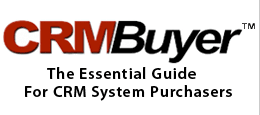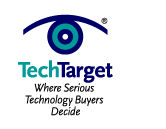 I was literally gobsmacked and I had to re-read the post several times. Gartner analyst Robert Desisto—who I don’t know at all—wrote a short post last week saying that today’s SaaS vendors, “will resist to the move to ‘pay as you go’ because it will have a very big impact on their business model predictability” and become “legacy dinosaurs” as his headline said.
I was literally gobsmacked and I had to re-read the post several times. Gartner analyst Robert Desisto—who I don’t know at all—wrote a short post last week saying that today’s SaaS vendors, “will resist to the move to ‘pay as you go’ because it will have a very big impact on their business model predictability” and become “legacy dinosaurs” as his headline said.
But, but, but! I stammered to myself. How can that be? I have been researching and writing about this space for fourteen years. I was the first analyst to cover Salesforce and a bunch of other early entrants, and one of the first people to have a practice dedicated to SaaS. They all had pay as you go models, at least back then. Did I miss something?
One of the real challenges of running a subscription business, and this includes SaaS companies as well as the Dollar Shave Club, ZipCar, and all the other companies that jumped on the bandwagon, is that you have very different revenue flows that must be accounted for. Companies like Zuora have built big businesses and attracted hundreds of millions of dollars in venture funding to build billing, payment, finance and accounting systems that cater to this massive industry. Now along comes Gartner with the clear implication that the pay as you go model is not in fact alive and well? I didn’t get it. Still don’t.
As a sanity check I contacted Tien Tzuo, CEO of Zuora, a subscription billing, payments and finance provider. In his previous life Tzuo was CMO of Salesforce and at one point had the job of inventing a billing system for Salesforce that operated the way subscriptions run. Here are some points from Tien.
- Just because some SaaS companies do three-year contracts that doesn’t make them enterprise software dinosaurs. Every successful SaaS company realizes that keeping churn low is a core part of the model, and every successful SaaS company realizes that long term contracts do not equate to low churn—the only thing that truly reduces churn is to have strong adoption and customer success. That’s why SaaS vendors invest in customer success while on premise software companies do not
- Many SaaS companies actually don’t offer three-year contracts. At Zuora, we see lots of companies with month-to-month models. CDNs, cloud companies, API companies, point-of-sale systems—these industries all skew towards month-to-month. Radian6 also had a month-to-month model. The post also says doing three-year contracts makes SaaS companies vulnerable to other startups who choose to offer month-to-month … but there’s nothing to stop the SaaS vendor from changing their billing policy whenever they want. (my note: provided they have a product like Zuora that makes this easy to do the billing and accounting).
- Customers don’t have to accept three-year contracts. It’s naive to say that it’s the SaaS vendor that forces it on them—many companies actually prefer long term contracts once they are committed to the SaaS vendor, as this gets them the best price as well as longer-term price protection. This can be a win-win scenario.
- This does create havoc on revenue recognition. Monthly billing makes billing messy but revenue recognition easier. Annual or multi-year billing makes billing easy but revenue recognition very hard. There’s no free lunch.
It was such an odd thing to read. It reminds me of some other chestnuts like, “If god wanted man to fly he would have given us wings,” or “We will never need telephones in England because we have such an abundant supply of messenger boys,” or “Someday every town will have a computer,” or my favorite, “640 KB is all the memory your computer will ever need.” These are all such Luddite comments you just knew upon hearing them that they won’t stand the test of time. Heck, this one didn’t survive a day before people started scratching their heads.
Perhaps the last word on this comes from the most authoritative source—the marketplace. On December 10, BrainSell, a Boston-based technology company announced it would offer an integrated solution of Intuit’s QuickBooks with bi-directional synch to Salesforce. According to the press release, “What’s really great is that customers can get a Salesforce subscription from BrainSell with no contract, and the ability to pay month to month!”
 CRM Magazine/destinationCRM.com
CRM Magazine/destinationCRM.com CRMBuyer
CRMBuyer ForecastingClouds
ForecastingClouds InSide CRM
InSide CRM SearchCRM
SearchCRM Animal Spirits
Animal Spirits Butterfly Economics, Paul Ormerod
Butterfly Economics, Paul Ormerod Competing on Analytics: The New Science of Winning
Competing on Analytics: The New Science of Winning Crowdsourcing
Crowdsourcing Dealing with Darwin, Geoffrey Moore
Dealing with Darwin, Geoffrey Moore Hello, Ladies! Dispatches from the Social CRM Frontier
Hello, Ladies! Dispatches from the Social CRM Frontier Origin of Wealth: Evolution, Complexity, and the Radical Remaking of Economics
Origin of Wealth: Evolution, Complexity, and the Radical Remaking of Economics Strategy and the Fat Smoker
Strategy and the Fat Smoker The Black Swan
The Black Swan The Wisdom of Crowds
The Wisdom of Crowds Twitter
Twitter